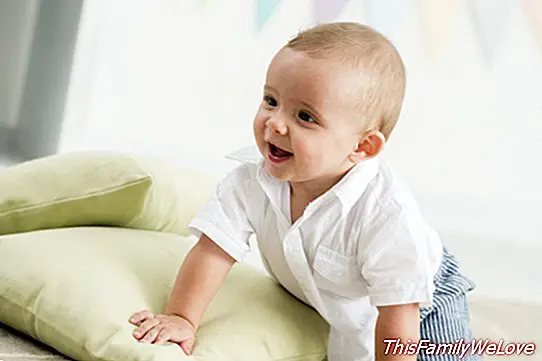75% of Spaniards do not properly disinfect toys
Dolls, stuffed animals, rattles, construction games ... are some of the toys They pass from one child to another both at home and in the nursery or school, and are a germ center between bacteria and viruses. Today we know that many childhood diseases, in addition to inhalation through the air, are contagious by contact. This is the case of rotavirus, which causes diarrhea, or the viruses and bacteria responsible for respiratory diseases.
For this reason, it is essential perform a good disinfection of toys, which are the objects that children manipulate the most. Other items such as children's furniture, including high chairs that use to eat or changing, can also have a high microbial load and present as many pathogenic organisms as toys that can be found lying on the floor and then children They are brought to the mouth.
Disinfection of toys prevents childhood diseases
So, a Household germs survey carried out by the University of Barcelona in collaboration with the company Sanytol has revealed that 75% of Spaniards do not properly disinfect toys. And it is that toys can be a possible route of transmission of pathogens if they are not disinfected in the proper way, that is, not only with soap and water, but with bleach or disinfectant liquids, and with a regular periodicity.

For this reason, the doctor in biology Maite Muniesa explains "the need to distinguish the concepts clean and disinfect." For proper disinfection, the expert in microbiology insists that "clean only with soap may not be enough, since many of the germs they are resistant to conventional cleaning. "According to Muniesa, there are disinfectant cleaners that" generally contain both an ingredient to remove dirt from surfaces, and one or more disinfecting ingredients that eliminate germs. The best thing is to add a disinfectant to the routine cleaning that prevents the accumulation of dirt ".
20% say it never disinfects toys
In fact, a study on toys from homes and day-care centers showed that 67.5% of toys gave positive results for at least one potentially pathogenic bacteria. Another study also showed that between 4% and 11% of the bacteria causing respiratory diseases or angina survive on the surface of the soft toys analyzed in a daycare center.
This study by the University of Barcelona also relates the results of a survey of more than 1,000 households with the scientific evidence already known. So, even though Spaniards are more sensitive to cleaning when there are children at home, almost 20% say it never disinfects toys and only the 38% confirm that they do it frequently. In any case, the survey reveals some confusion among the respondents regarding the concept of disinfection: a 75% consider that washing toys with soap and water is equivalent to disinfecting.
Infections and the child's immune system
Babies and children have a developing immune system and, for this reason, are more susceptible to infections until it reaches full maturity. In addition, the behavioral habits of children and babies increase the possibilities of contact with pathogens as they crawl on the ground, bring objects to their mouths, protest to wash their hands, etc.
In summer, it is even more important to become aware of the disinfection of toys and children's furniture, since high temperatures become the ideal breeding ground for the survival of viruses and bacteria. Do not forget that, in the summer season, the remains of foods or fluids of children can remain attached to its surface and facilitate the growth of microorganisms.
Special mention should be made of rotavirus, the most frequent cause of infectious diarrhea, especially in children under five years of age. Several studies have suggested that toys can contribute to outbreaks of diarrhea and vomiting, since in various nurseries with rotavirus outbreaks, 39% of toy balls were contaminated with the virus.
Therefore, if we want to maintain a healthy home, we must pay attention to the disinfection of each surface where bacteria such as Staphylococcus or E. coli and fungi can accumulate. It is also necessary to eliminate frequently the bacteria that cause odors in clothes, towels and even soft toys and soft toys.
Marisol Nuevo Espín




